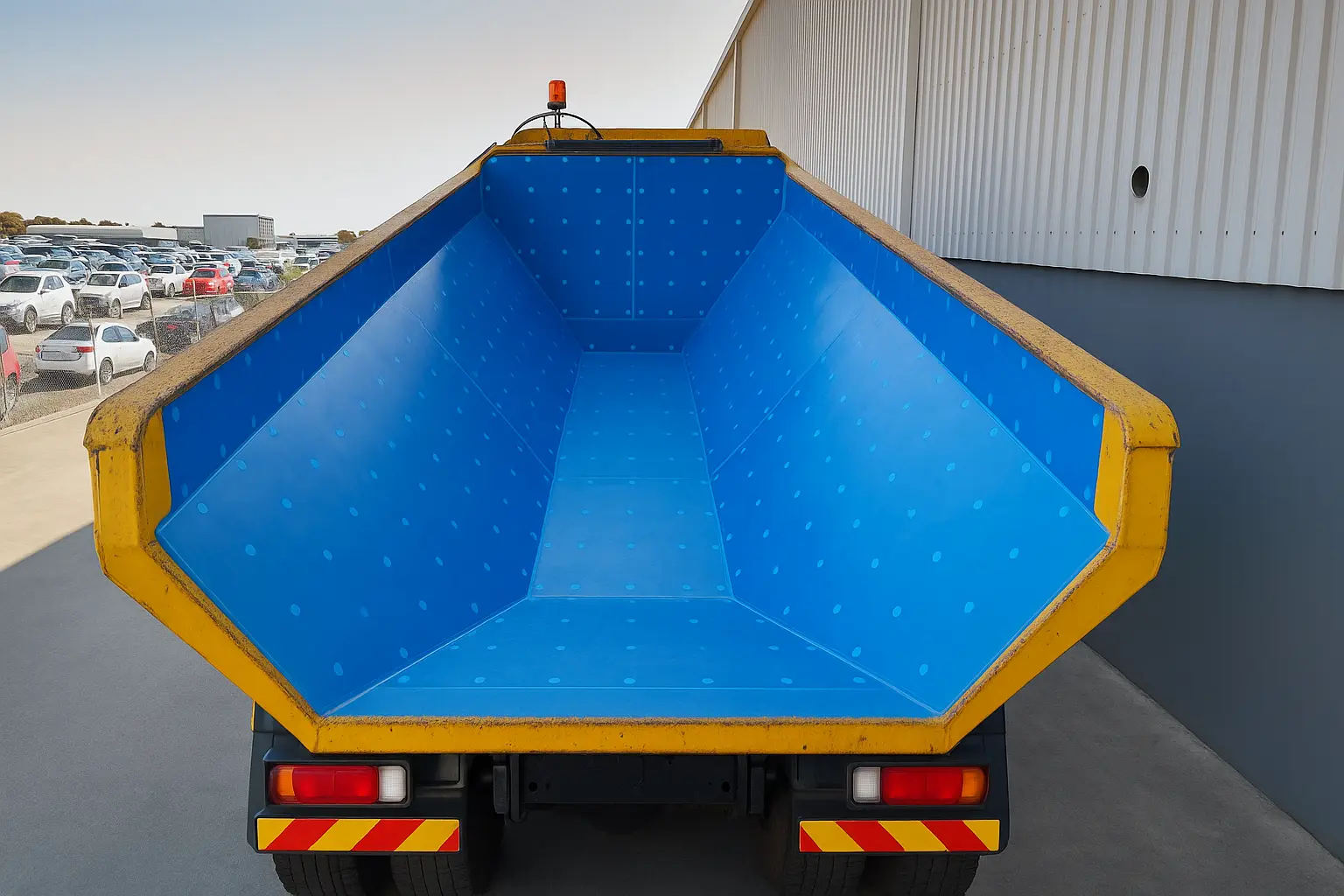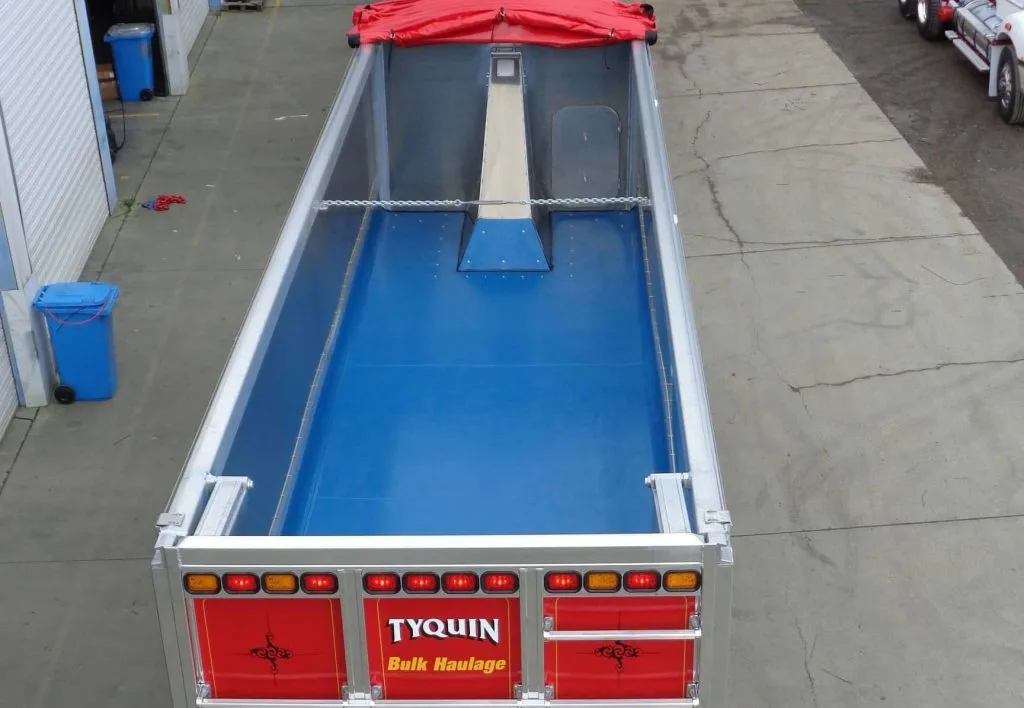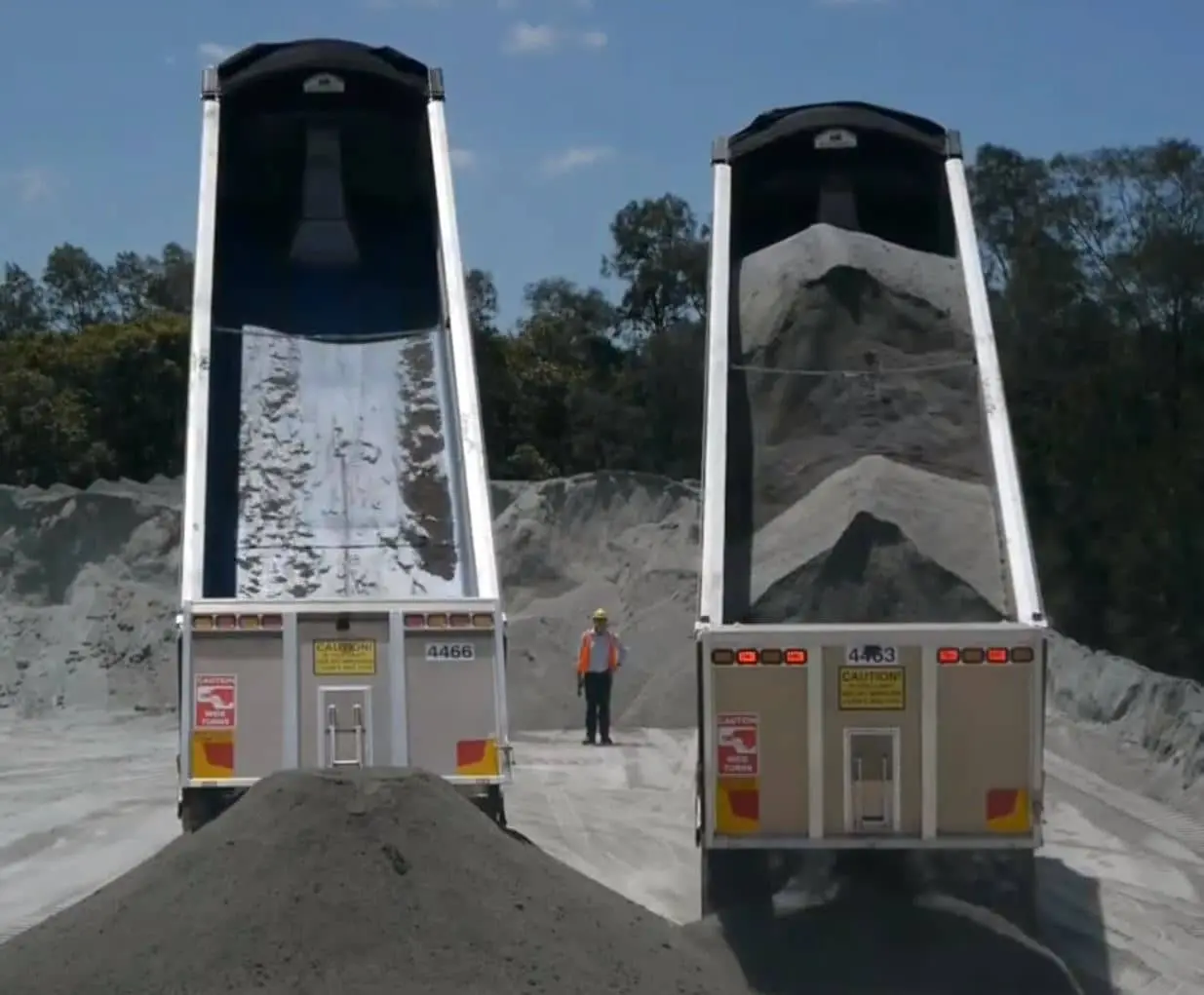At a glance
- OKUSLIDE® liners are made from UHMWPE, which offers superior wear resistance, impact absorption, and structural integrity.
- Unlike aluminium, OKUSLIDE® liners are non-corrosive and UV-stabilised.
- The liners’ slick surface prevents material buildup, reducing tipping angles, enhancing tipping speed and operator safety.
- OKUSLIDE® liners excel in demanding sectors like mining, agriculture, and construction.
You know the importance of having strong and durable truck and trailer liners when you need to handle the loading and unloading of bulk materials. Constant exposure to abrasive materials, heavy loads, and extreme weather can quickly wear down conventional truck body liners.
If you’re tired of constant repair costs and maintenance downtime, there’s a better solution. OKUSLIDE® liners are built to outlast and outperform conventional liners, offering superior protection and durability. In fact, they last up to five times longer than aluminium liners.
If you’re wondering how they are more durable than aluminium liners, we’ll explore them in depth today.
Aluminium vs. OKUSLIDE®: What’s the Difference?
Before we discuss the durability of a UHMWPE-based liner, let’s quickly look into the differences between Aluminium and OKUSLIDE® from the summarised table below.
| Factors | OKUSLIDE® | Aluminium |
| Material | UHMWPE polymer | Metal alloy |
| Abrasion resistance | 5x higher | Prone to scratching/gouging |
| Maintenance | Minimal (non-stick surface) | Frequent cleaning/repairs |
| UV Resistance | UV-stable, resists degradation | May corrode in extreme conditions |
| Weight | Lightweight polymer | Lightweight metal |
| Tipping Angle | Reduces angle, enhancing safety | Requires steeper angles |
Why Do OKUSLIDE® Liners Last 5x Longer Than Aluminium?
When we compare aluminium with OKUSLIDE® liners based on abrasion resistance, lower friction and other attributes, aluminium simply cannot compete. The formulation of UHMWPE (Ultra-High Molecular Weight Polyethylene) makes all the difference in making OKUSLIDE® more durable than aluminium.
Let’s examine how UHMWPE’s self-lubricating, high-impact polymer properties make it ideal for you.
Material Composition
Aluminium is one of the most popular materials used in truck body manufacturing. However, it might not be ideal when there is impact or exposure to abrasive loads.
On the other hand, OKUSLIDE® liners are made from UHMWPE (Ultra High Molecular Weight Polyethylene) and engineered for superior performance in demanding conditions. This advanced polymer material combines exceptional impact resistance, high abrasion tolerance, and extremely low surface friction.
Read More: Making the Right Choice: Selecting Liner Materials for Your Fleet’s Requirements
Abrasive and Superior Wear Resistance
Aluminium components need to be replaced due to wear after only a few months of rigorous operation. There might be more damage when using abrasive materials such as rocks or soil. Moreover, there are chances of dents and liner thinning in aluminium-based liners when exposed to impacts from abrasive materials.
However, because of their high molecular density, UHMWPE-based tray liners preserve their surface condition for extended durations. The manufacturing of OKUSLIDE® liners aims to support highly abrasive loads, including rocks, sand, gravel, soil, and compost materials. This means that the friction and abrasive particles do not affect the liners as much as they do any other metal-based components.
No Rust and Corrosion
Aluminium deteriorates through corrosion under particular environmental factors, such as acidic or salty material loads. When dealing with corroded materials, operations become hazardous for those involved, such as fleet operators and other workers.
OKUSLIDE® solves these issues. There are very few loading conditions that trigger reactions or deterioration in UHMWPE materials. As a result, UHMWPE avoids frequent repairs and maintenance operations, which come with considerable expenses.
Higher Impact Absorption
The liner surface receives material strikes during loading and tipping, which, in the case of aluminium liners, leads to deformation and surface damage. Over time, this impact can result in structural weakening.
Unlike metal, UHMWPE is flexible enough to absorb impacts making it a more reliable long-term solution for handling bulk materials. The polymer structure in OKUSLIDE® is a non-porous material that doesn’t absorb liquids, which helps stop bacteria, mould, or contaminants from settling in and spreading between loads. As a result, there are no weak spots, and the risk of structural damage is significantly reduced.
Read More: The Role Of UHMWPE Liners In Preventing Cross-Contamination In Transport
Better UV Resistance
OKUSLIDE® liners are UV-stabilised, ensuring consistent performance over years of sun exposure without cracking or fading. Moreover, their UHMWPE composition is specially treated to resist the harmful effects of sunlight, meaning the material won’t crack, fade, or degrade even after years of direct exposure. This stabilisation ensures long-lasting colour, structural integrity, and performance in harsh, sun-drenched environments.
This means OKUSLIDE® is better suited for UV operation than its metal counterparts.
Friction and Flow Efficiency
The friction between the materials and the liner leads to material hang-up. Moreover, when the regular cleaning operations are not carried out, the build-up of materials creates hazards for liners.
OKUSLIDE® is naturally slippery because it has special additives that reduce friction, making it easier for materials to slide off. The low surface energy of OKUSLIDE® causes it to remain slick by nature, which decreases buildup and enhances tipping efficiency while maintaining liner quality over time.
Moreover, smooth unloading from tipper beds offered by OKUSLIDE® helps prevent rollover and tipping risks, keeping your staff safer on the job.
Read More: Exploring Safety Differences: OKUSLIDE® Versus Traditional Liners
Service Life and Maintenance
OKUSLIDE® tests its products extensively before they are released to the market. Manufactured in Germany and supported by Australian engineers, OKUSLIDE® liners are designed and tested to perform reliably across a wide range of operating conditions.
The long service life of OKUSLIDE® liners is also attributed to their non-corrosive properties and UV-stabilised composition, which helps the material components withstand exposure to moisture.
Aluminium liners, on the other hand, often require more frequent inspections, patchwork, or complete replacement after years of use. Therefore, OKUSLIDE® is more durable than aluminium-based options, saving operational maintenance costs.
Why UHMWPE is the Gold Standard for Liners
OKUSLIDE®’s liners perform well due to their UHMWPE (Ultra-High Molecular Weight Polyethylene) formulation. Here’s how the UHMWPE formulation makes this material better than alternatives on the market for fleet operators of all kinds.
- Exceptional wear and impact resistance.
- The materials exhibit low friction characteristics, which makes them easy to unload during tipping operations.
- Resistance to corrosion and UV.
- High tensile strength despite its lightweight nature.
In conclusion, the OKUSLIDE® liners differentiate themselves from other options in the market. OKUSLIDE® protects against wear from quarry product and wet compost in agriculture, allowing them to perform five times longer than typical solutions.
Don’t settle for short-term solutions. Explore our full range of UHMWPE truck bed liners at OKUSLIDE® and see why they last up to five times longer than aluminium.



